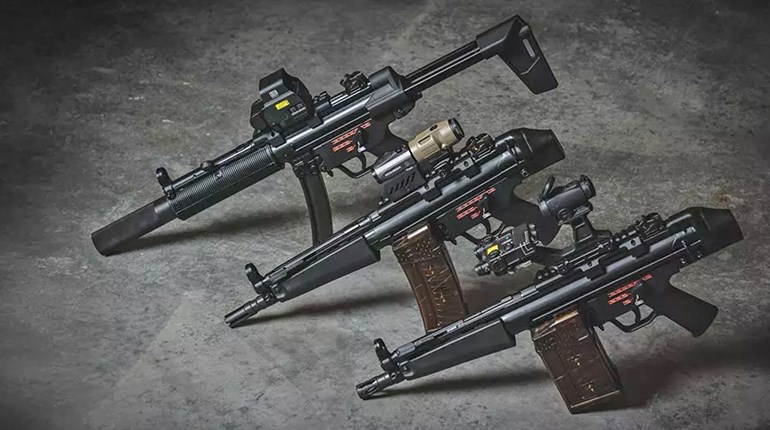
Once the solvent has had several minutes of dwell time, the loosened carbon may be removed with clean patches, though it may take several of them.
I have a CZ 452 .22-caliber rimfire rifle I have used for more than a few years in local competitions, informal plinking and pest control. I have always shot quality ammunition in it and made sure to run a patch through the bore to remove the remaining firing residue before putting it away after each visit to the range. Recently, I began experiencing something odd, namely first-round flyers and occasional unexplained flyers in the middle of a 10-shot string. My groups are increasing in overall size as well. Having fewer than 2,500 rounds through the gun, I cannot imagine that the steel barrel would be worn out from shooting lead bullets through it. One of the guys with whom I shoot suggested I check the barrel for a carbon ring to help determine the unexplained fall off in accuracy.
Where would I look, and how would I recognize a carbon ring if I found one? What do I need to do to remove it, and what do I need to do to ensure it does not return in the future?
Chip Sayle, Bellingham, WA
For many rimfire shooters, the question of a carbon ring is a difficult problem to recognize, understand and solve.
Even today, in centerfire as well as rimfire rifles, the effects of carbon buildup in barrels is often overlooked. Copper fouling, equipment problems and lack of exercising proper shooting techniques are often blamed for accuracy deficiencies, when the culprit is actually carbon.
Carbon fouling comes as a byproduct of the combustion of the powder and primer used to propel the bullet down the barrel toward the target. In the case of rimfire cartridges, where many of the bullets are externally lubricated, the oil or wax used to lubricate the bullet compounds the aforementioned phenomenon by aiding in the formation of a thin and very hard deposit at the case mouth of the chambered cartridge. Centerfire cartridges, perhaps because of their higher pressures and greater volume of powder, can leave detrimental carbon deposits from the case mouth to as much as several inches down the barrel.
Rarely, if ever, is the presence of carbon buildup in front of the chamber discernible without a bore scope. With a bore scope, the carbon ring in a .22 rimfire is recognized as a blackish discoloration of the barrel steel just in front of where the case mouth ends. It may appear insignificant, but rest assured, this buildup can cause the firearm to lose its consistency and accuracy from one shot to the next. However, this loss of accuracy may occur in as little as a few hundred rounds or may only become apparent after several thousand rounds are fired. The variables are nearly infinite as to why this is, but when accuracy falls off without explanation, a good place to look is the area just in front of the chamber.
Once a carbon ring is identified with a bore scope, removal is best done with a solvent designed specifically for carbon removal. Some of the commercially available solvents have different cleaning recommendations, which means you should read and follow their instructions for best results.
In general, a bore mop, saturated with solvent, positioned in the area of the carbon ring for a few minutes will start to soften and dissolve the carbon deposit, allowing its removal with clean patches. Occasionally, the solvent needs a little help with some scrubbing action. A nylon bore brush is usually sufficient to finish the removal. In the most extreme cases, a lose-fitting bronze brush that can be turned—by hand—in the affected area by hand will remove the last of the stubborn residue.
Never use a brush or tool of any type in the barrel that approaches the hardness of the barrel steel itself. It goes without saying that reversing a brush in the barrel, rapidly or otherwise, will damage the brush and may damage the barrel.
Once the carbon ring is gone and the area from the chamber to the lands and grooves is shiny again, treating the affected area with a high-quality oil such as Mil-Comm TW25B will help mitigate the carbon buildup over time.
Some shooters find added value in accuracy and in cleaning the bore of the barrel with the same product, while others insist that only the chamber area needs to be treated. Try it both ways and see what works best for you. Periodic maintenance is never a bad idea for keeping your equipment in peak operating condition.



































